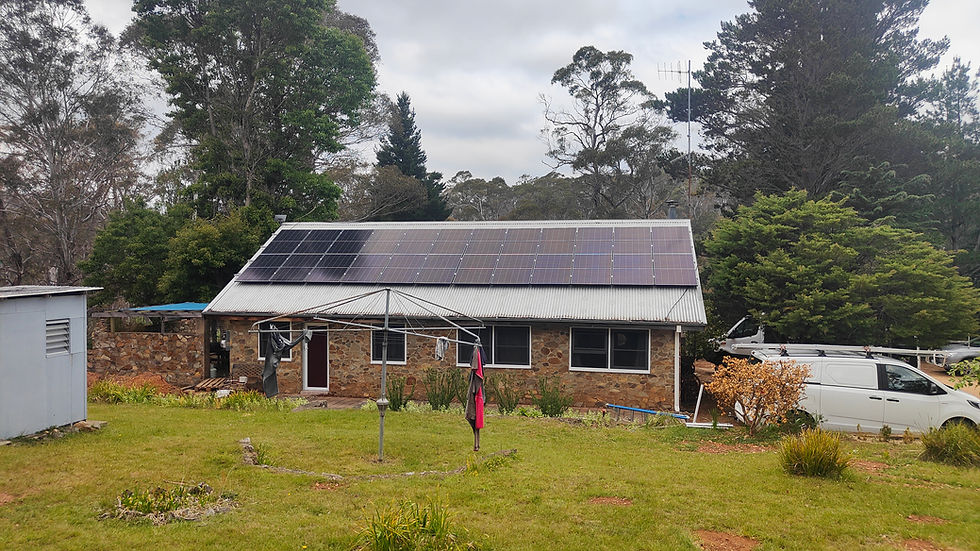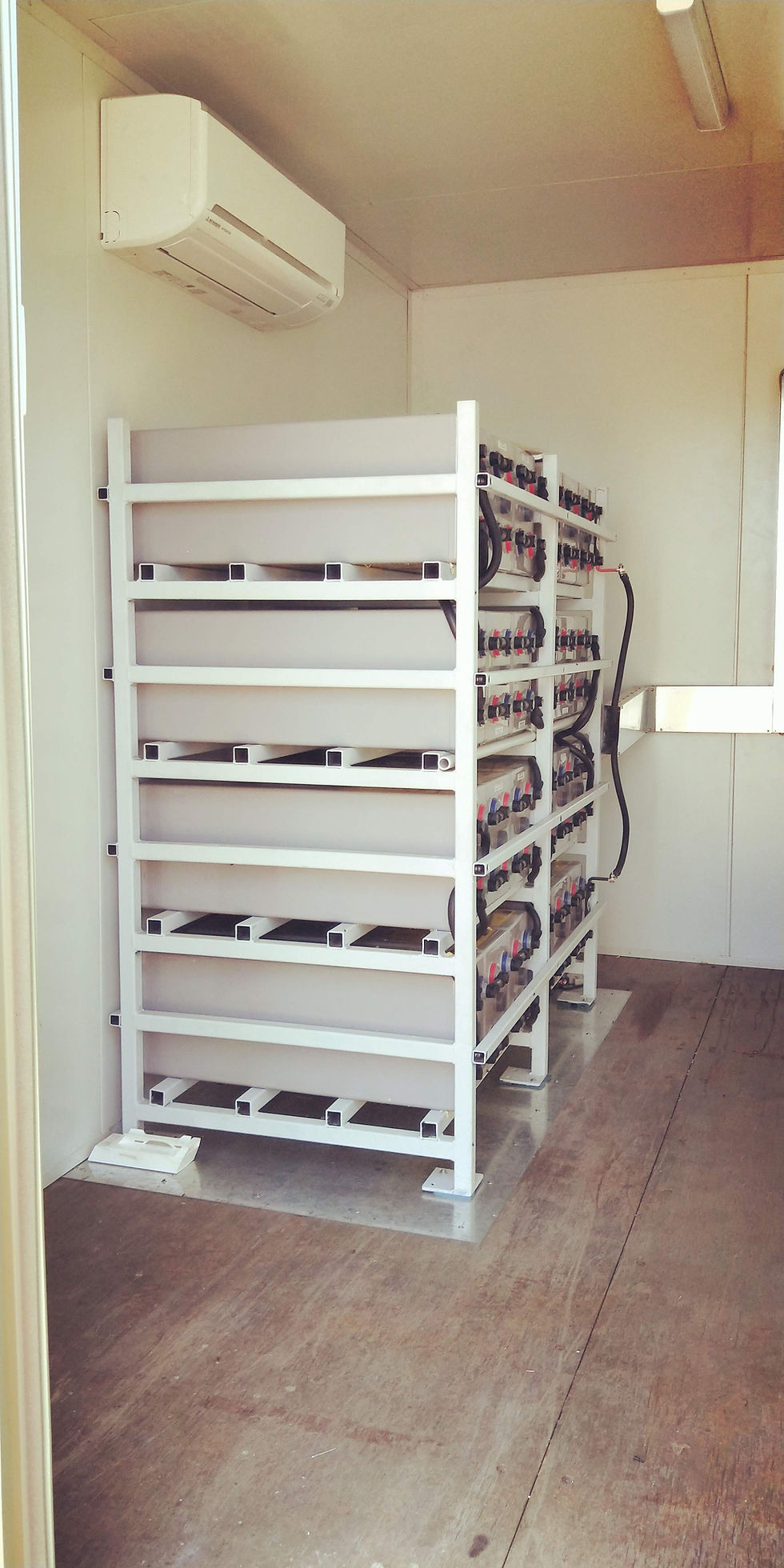AS/NZS 4509 Part 4: Off-Grid System Design: A Comprehensive Guide to Load Profiles, Battery Sizing, Inverter Selection, and Backup Strategies
- JVC Energy Team

- Feb 24
- 6 min read
Updated: Mar 8
In today's world, where energy independence and sustainability are more important than ever, off-grid systems are gaining traction. The AS/NZS 4509 standard plays a critical role in shaping these systems. Its guidelines affect everything from load management to backup strategies, making it essential for anyone looking to optimize their energy use. This guide dives into how AS/NZS 4509 influences off-grid system design, providing practical examples and recommendations.

Understanding Battery Performance in Off-Grid Systems: Days of Autonomy, Depth of Discharge, State of Charge & State of Health
When designing an off-grid solar power system, battery performance is one of the most critical factors. The efficiency, longevity, and reliability of your energy storage depend on understanding four key concepts: Days of Autonomy, Depth of Discharge (DoD), State of Charge (SoC), and State of Health (SoH).
Days of Autonomy: Planning for Energy Security
Days of autonomy refer to the number of days your battery system can supply power without solar generation. This is crucial for ensuring energy reliability during extended cloudy periods or unexpected increases in energy demand.
Key Factors Affecting Days of Autonomy:
Load Requirements: The more energy your system consumes daily, the fewer days of autonomy you’ll have.
Battery Capacity: Larger battery banks provide more backup power.
Solar Resource Availability: Locations with frequent cloud cover require higher autonomy to compensate for lower solar production.
Backup Systems: Incorporating a generator can reduce the need for large battery banks by supplying power when needed.
What Does AS/NZS say about DOA in designing of grid systems? Rule of Thumb
Design minimum of 3 days without a Genset
2 Days with a suitably sized Genset
Depth of Discharge (DoD): Maximizing Battery Lifespan
Depth of Discharge (DoD) represents how much energy has been used from the battery relative to its total capacity. It’s expressed as a percentage.
For example, if a 10kWh battery discharges to 3kWh, it has a 70% Depth of Discharge (DoD).
Why Does DoD Matter?
Battery Lifespan: The deeper a battery is discharged, the fewer cycles it can complete. A battery with a 90% DoD will wear out faster than one limited to 50% DoD.
Manufacturer Guidelines: Many lithium batteries recommend a DoD of 80-90%, while lead-acid batteries should ideally stay below 50% to extend life.
Energy Availability: A lower DoD setting means more stored energy remains as a backup, reducing the risk of complete depletion.
Best Practice:
For Lithium-ion (LiFePO4) batteries, maintaining a DoD of 80% balances performance and longevity. For lead-acid, staying under 50% is recommended.
State of Charge (SoC): Real-Time Battery Monitoring
State of Charge (SoC) is the opposite of Depth of Discharge—it represents the percentage of charge remaining in the battery.
For example, if a 10kWh battery has a SoC of 40%, it means 4kWh of energy is still available.
Why SoC is Critical:
Prevents Over-Discharging: Allowing a battery to reach 0% SoC can damage cells and shorten lifespan.
Optimizes Charging Strategies: Charging batteries before they reach low SoC levels helps maintain long-term performance.
Enhances System Control: Smart inverters and battery management systems (BMS) use SoC data to optimize energy distribution.
Best Practice:
Lithium-ion batteries are most efficient when operated between 20-90% SoC to prevent overcharging or deep discharge
State of Health (SoH): Evaluating Long-Term Battery Performance
State of Health (SoH) measures the overall condition of a battery compared to its original capacity. It is typically displayed as a percentage.
For example, a battery with an 80% SoH means it can only hold 80% of its original capacity due to natural degradation.
Factors That Reduce SoH:
Excessive DoD: Deep discharges accelerate wear.
High Operating Temperatures: Heat speeds up battery degradation.
Frequent Charge/Discharge Cycles: More cycles reduce capacity over time.
Overcharging or Undercharging: Both extremes negatively affect lifespan.
Best Practice:
Regular battery monitoring and proper maintenance can help prolong SoH above 80% for many years.

Understanding Load Profiles and Energy Demands
The foundational step in designing an off-grid system is understanding your load profiles and energy demands. Knowing how much energy is required at different times allows for a more dependable system.
AS/NZS 4509 stresses the need to assess both peak and average loads. For instance, a typical household might have peak loads during the morning when multiple appliances, like a refrigerator, coffee maker, and heating system, are in use simultaneously. Understanding these patterns is critical.
To create an effective off-grid system, I suggest tracking your energy usage over a week. This analysis will give you a clearer picture of your energy needs, helping you decide how to spread your power consumption. According to industry studies, households that monitor their energy use can reduce their consumption by up to 30%.
By aligning your load profile with AS/NZS 4509, you will ensure that the energy generated will meet your needs without oversizing components—a mistake that can lead to inefficiencies.
Battery Sizing and Storage Requirements for Peak Demand Management
After understanding your load profiles, the next important step is battery sizing and determining storage needs. Batteries in off-grid setups must cope with peak demand and maintain sufficient reserve capacity.
AS/NZS 4509 provides clear guidelines for battery banks, outlining crucial parameters like the depth of discharge (DOD). This level indicates how much energy you can safely draw from a battery without risking damage. For example, lithium-ion batteries usually allow a DOD of around 80%, while lead-acid batteries typically only allow 50%.
When sizing your battery, consider calculating based on your peak load and including a buffer for unexpected needs. If your peak load is 5 kW, a good practice is to have at least 7.5 kW worth of battery capacity. This will keep your system functional during extended low-solar days or bad weather.
Incorporating smart battery management systems that align with AS/NZS 4509 can also extend battery life by optimizing charge cycles and monitoring usage, leading to potential energy savings of around 15% to 20% over time.
Selecting Appropriate Inverters and Generation Systems
Choosing the right inverter and generation system is vital for any off-grid setup. Inverters convert direct current (DC) from batteries to alternating current (AC) for household use.
The AS/NZS 4509 standard has guidelines for inverter sizing that help in efficient energy conversion and peak load management. An undersized inverter can lead to overload and damage. For example, if your peak load is 4 kW, consider an inverter rated for at least 6 kW. This extra capacity helps handle the inrush current that higher-demand appliances generate when starting.
Additionally, incorporating renewable generation systems like solar panels requires careful planning. For a typical home needing about 10 kWh daily, a solar array of around 1.5 kW can be beneficial, assuming 6 hours of effective sunlight daily. This sizing ensures you can effectively replenish your battery storage.
Ensuring Redundancy and Backup for Critical Applications
Ensuring redundancy and robust backup strategies for critical applications is essential in an off-grid system. The AS/NZS 4509 standard emphasizes this, especially for installations housing sensitive equipment, such as medical devices.
I recommend installing automated systems that switch between your primary energy source and a secondary system, like a generator, when renewable energy is insufficient. This setup can prevent interruptions. For instance, if solar generation drops below a set threshold, the backup generator can kick in automatically, ensuring critical loads remain operational.
Segmentation of your electrical system can provide additional redundancy. By prioritizing essential loads, you can allocate resources more effectively. For example, during extended cloudy days, keeping the refrigerator running while temporarily shutting off less critical devices—like a second refrigerator—can help manage overall power consumption.
AS/NZS 4509 also highlights the importance of regular maintenance and testing of backup systems, ensuring they are always in working order. Regular checks can reduce the chances of failure by up to 25%, giving additional peace of mind.
Key Takeaways for Off-Grid System Efficiency
Designing an off-grid system in line with the AS/NZS 4509 standard can dramatically enhance efficiency and reliability. By accurately understanding your load profiles, sizing batteries effectively, choosing the right inverters and generation systems, and ensuring a solid redundancy plan, you can significantly improve your energy self-sufficiency.
Adhering to this standard is crucial. It enables homeowners and system designers to create efficient and dependable off-grid solutions that meet energy needs responsibly.
As we transition to a greener future, embracing reliable off-grid technologies empowers us as individuals and contributes to wider environmental goals. Let us utilize the AS/NZS 4509 guidelines to forge sustainable energy solutions that are resilient and efficient.
With thoughtful planning and adherence to established standards, we can ensure our off-grid systems are effective, reliable, and well-suited to meet our energy needs. I hope this guide sheds light on optimizing your off-grid system design according to AS/NZS 4509.
Bringing It All Together: Optimizing Battery Performance for Off-Grid Systems
To design a reliable and long-lasting off-grid system, it's essential to balance all four metrics:
✅ Plan for sufficient Days of Autonomy to avoid energy shortages.✅ Set an optimal Depth of Discharge (DoD) to extend battery life.✅ Monitor State of Charge (SoC) to prevent system failures.✅ Track State of Health (SoH) to anticipate battery replacement needs.
JVC Energy specializes in high-efficiency off-grid solar and battery systems, ensuring every system is optimized for reliability and longevity.
🔋 Looking for an off-grid energy solution? Contact us today! 🔋




Comments